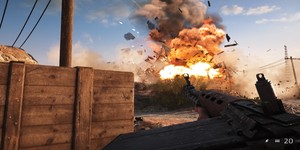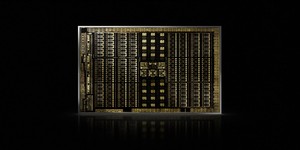Ray tracing support found in EA's Battlefield V
August 20, 2018 | 11:22
Companies: #electronic-arts #imagination-technologies #microsoft #nvidia

Evidence that Electronic Arts' upcoming shooter Battlefield V will include support for the ray-tracing capabilities expected to appear in Nvidia's next-generation gaming graphics cards has been uncovered by a German technology site - but it's unclear how deeply the game integrates the technology.
Nvidia revealed its next-generation Turing graphics architecture last week, but exclusively in professional-grade workstation form. As revealed, the new Quadro RTX family includes dedicated hardware for both deep-learning and artificial intelligence acceleration as well as for real-time ray tracing - a high-quality rendering method which produces convincing images but at a computational cost which, selected high-priced pro-grade accelerator hardware aside, has made it ill-suited for real-time use.
That Nvidia plans consumer-grade Turing cards, which leaks have shown will launch under the GeForce RTX branding, is no real secret, but the fact that it has convinced at least one developer to make use of the architecture's new ray tracing capabilities so quickly should raise at least a few eyebrows. It's exactly this which has been uncovered by German technology site PC Games Hardware, however, with the closed alpha of Electronic Arts' Battlefield V containing references to a 'raytrace' setting currently disabled on non-Turing hardware.
Neither EA nor Nvidia have responded to the site's discovery, but there is precedent for ray tracing in gaming: Even before Nvidia integrated the technology into its Turing architecture, Imagination Technologies was showcasing a hybrid raster-raytrace renderer for mobile gaming. It's a technology which has been just around the corner for some time, mind you: In 2006 we ran a piece entitled 'raytracing in games not so far off' which turned out to be a little overoptimistic, despite work in that direction from Intel in 2008.
The consumer implementation of the RTX ray tracing technology is expected to use Microsoft's DirectX Raytracing (DXR) application programming interface, for which AMD has also pledged its own support.

MSI MPG Velox 100R Chassis Review
October 14 2021 | 15:04









Want to comment? Please log in.